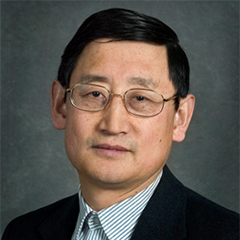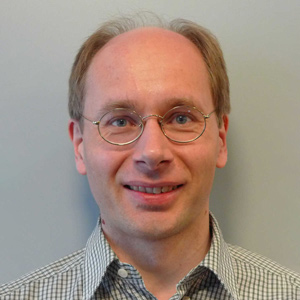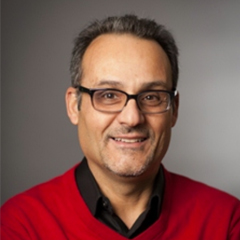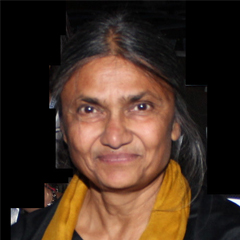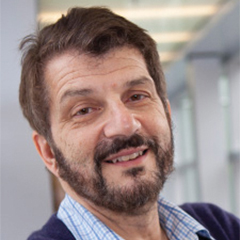Arivumani Servai
Laboratory Engineer I, CIPR
Certified Engineer with more than 24 years of experience, with skill and knowledge of Spectroscopy equipment’s like ICP-MS, ICPOES, AAS, FTIR, UVVIS, XRD and XRF in the field of Analytical Science and Instrumentation.
Educational Qualification
- Bachelor of Electronic Science, University of Madras, India
Certification from Manufacturer like ThermoFisher, PerkinElmer and Agilent Technologies etc.
Research Interests
- Applications based on ICPMS and OES
Dr. Michael Pittelkow
Adjunct Associate Professor, CIPR
Michael Pittelkow was born in 1977 in Copenhagen. At the University of Copenhagen he received his PhD degree in 2007. During his studies he spent extended periods in Australia (CSIRO in Melbourne), The Netherlands (The Technical University of Eindhoven) and England (Cambridge University). He undertook postdoctoral studies in the UK (Cambridge University) before moving back to Denmark to start as an adjunkt (assistant professor) at the department of chemistry, University of Copenhagen in November 2008. In 2012 he became a permanent adjunkt and in 2013 he became associate professor (lektor) at the same department. His research interests include organic synthesis, physical organic chemistry, dendrimers and supramolecular chemistry.
Educational Qualification
- PhD, Chemistry, University of Copenhagen, Denmark, 2007.
- M.Sc, Chemistry, University of Copenhagen, Denmark, 2003.
Research Interests
- Synthetic organic chemistry.
- Supramolecular chemistry.
- Dynamic combinatorial chemistry.
- Molecular understanding of descale phenomena in materials and oilfield chemistry.
Selected Publications
- An antiaromatic-walled nanospace, M. Yamashina, Y. Tanaka, R. Lavendomme, T. Ronson, M. Pittelkow, J. R. Nitschke, Nature, 2019, 511-515.
- Symmetric, unsymmetrical and asymmetric [7]-, [10]- and [13]helicenes, S. K. Pedersen, K. Eriksen, M. Pittelkow, Angew Chem. Int. Ed., 2019, doi.org/10.1002/anie.201910214.
- Heavy-atom-substituted nucleobases in photodynamic applications: substitution of sulfur for selenium in 6-thioguanine induces a remarkable increase in the rate of triplet decay in 6-selenoguanine, K. Farrell, M. Brister, M. Pittelkow, T. I. Soelling, C. Crespo-Hernandez, J. Am. Chem. Soc., 2018, 14, 11214-11218.
- A gold-nanoparticle stoppered [2]rotaxane, A Ulfkjaer, F. W. Nielsen, H. Al-Kerdi, T. Russ, Z. K. Nielsen, J. Ulstrup, L. Sun, K. Moth-Poulsen, J. Zhang, M. Pittelkow, Nanoscale, 2018, 10, 9133-9140.
- Thiosemicarbazone organocatalysis: tetrahydropyranylation and 2-deoxygalactosylation reactions and kinetic evidence for oxyanion hole-like mechanism, D. Larsen, L. M. Langhorn, O. M. Akselsen, B. E. Nielsen, M. Pittelkow, Chem. Sci., 2017, 8, 7978-7982.
- New WOLEDs based on pi-extended azatrioxa[8]circulenes, K. B. Ivaniuk, G. V. Baryshnikov, P. Y. Stakhira, Z. Hotra, S. K. Pedersen, M. Pittelkow, B. F. Minaev, H. Aagren, J. Mater. Chem. C, 2017, 5, 4123-4128.
- Synthetic Receptors for High-Affinity Recognition of O-GlcNAc Derivatives, P. Rios, T. S. Carter, T. J. Mooibroek, M. P. Crump, M. Lisbjerg, M. Pittelkow, N. T. Supekar, G.-J. Boons, A. P. Davis, Angew. Chem. Int. Ed., 2016, 55 (10), 3387-3392.
- Biotin[6]uril esters: chloride selective transmembrane anion carriers employing C-H…anion interactions, M. Lisbjerg, Valkenier, B. M. Jessen, H. Al-Kerdi, A. P. Davis, M. Pittelkow. J. Am. Chem. Soc., 2015, 137(15), 4948-4951.
- Discovery of a cyclic 6+6 hexamer of D-Biotin and formaldehyde, M. Lisbjerg, B. M. Jessen, B. Rasmussen, B. E. Nielsen, A. Oe. Madsen, M. Pittelkow. Chem. Sci., 2014, 5 (7), 2647-2650.
Awards & Honors
- ‘Lundbeckfondens Talentpris’ 2008 Awarded to scientists under the age of 30.
- ‘Teacher of the year‘ 2015, Faculty of Science, University of Copenhagen.
- ‘Ellen and Niels Bjerrums Kemikerpris‘ 2016.
Dr. Yu-Shu Wu
Adjunct Professor, CIPR
- 2008-Present
Professor (Tenured) and Energi Simulation (Formerly, Foundation CMG) Reservoir Modeling Chair, Dept. of Petroleum Engineering (PE), Colorado School of Mines (CSM), Golden CO, USA.
Teach undergraduate and graduate courses in petroleum reservoir engineering and numerical reservoir simulation, well testing analysis, secondary and tertiary oil recovery methods (EOR/IOR), flow and transport phenomena in porous media and in unconventional reservoirs, and geothermal reservoir engineering.
Advise M.S. and Ph. D graduate students for their thesis research in the areas of reservoir simulation, flow and transport in porous media, CO2 EOR application, CO2 sequestration, fractured reservoir studies, development of unconventional petroleum resources, coupled geomechanics-flow simulation, well testing analysis, and reservoir engineering in general.
Lead the Energy Modeling Group (EMG) of the PE Department in its research effort in (1) CO2 EOR application and CO2 sequestration; (2) improved formation stimulation/cryogenic fracturing technologies; (3) advanced reservoir simulation technologies; (4) unconventional oil and gas reservoir simulation; (5) fractured reservoir characterization; (6) coupled thermal-hydrologic-mechanic-chemical (THMC) processes in reservoirs; and (7) hydraulic fracture modeling. - 2008 – Present
Guest Scientist, Earth and Environmental Sciences, Lawrence Berkeley National Laboratory (LBNL), Berkeley, California, participating in collaborated research projects on development on unconventional natural gas/oil resources, nuclear waste disposal, CO2 sequestration, enhanced geothermal systems (EGS), and cryogenic fracturing technology. - Feb 2017-Present
Scientist IV, National Center for Mechanical and Thermal Science and Engineering, National Renewable Research Laboratory (NREL), 15301 Denver West Parkway. Golden, CO 80401. - 2016 – Present
Scientific Advisory Committee (SAC) member, the National IOR Centre of Norway. - 1995 – 2008
Staff Geological Scientist, Earth Sciences Division, Lawrence Berkeley National Laboratory (LBNL), University of California, Berkeley, CA.
Principal Investigator (PI), led a multidisciplinary team in quantitative investigations of
Educational Qualification
- Ph.D. Reservoir Engineering, Department of Materials Sciences and Mineral Engineering, University of California at Berkeley, Berkeley, CA USA
- M.S. Reservoir Engineering, Department of Materials Sciences and Mineral Engineering, University of California at Berkeley, Berkeley, CA USA
- M.S. Petroleum Engineering, Department of Petroleum Engineering, Southwest Petroleum Institute (Currently, Southwest Petroleum University), China
- B.S.(Eqv.) Petroleum Engineering, Department of Petroleum Engineering, Daqing Petroleum Institute (Currently, Northeast Petroleum University), Heilongjiang, China
Research Interests
My primary research interests and experiences are in the general area of reservoir engineering, specifically, in reservoir characterization and simulation, including modeling coupled processes of multiphase fluid flow, multicomponent chemicals transport, heat transfer, and rock deformation in EOR/IOR processes; CO2 flooding and geosequestration; fractured reservoir characterization; and non-Newtonian and non-Darcy flow behavior. My objectives of research have been to develop and apply mathematical models and computational approaches for quantitative investigations of real-world problems in flow and transport through porous media. I have developed a number of reservoir simulators and modeling approaches, which are currently used in petroleum industry, groundwater and environmental communities inside and outside of the US.
My major contributions to flow and transport in porous and fractured reservoirs and reservoir simulations have been well documented in my scientific publications through various revenues. I have published (authored and coauthored) about 300+ scientific papers, conference articles and presentations, and technical reports, including about 130 peer-reviewed journal papers, 2 books, 19 book/chapters, and 60+ SPE papers.
Selected Publications
- Tang, Huiying, Shihao Wang. Congbin Yin, Yuan Di, Yu-Shu Wu, and Yonghong Wang, “Fully-coupled multi-physical simulation with physics-based nonlinearity-elimination preconditioned inexact Newton method for enhanced oil recovery,” Commun. Comput. Phys., Vol. 25, No. 1, pp. 244-265, 2019
- Farah, N., M. Delorme, D.Y. Ding, Yu-Shu Wu, and D. Bossie Codreanu, “Flow modelling of unconventional shale reservoirs using a DFM-MINC proximity function,” Journal of Petroleum Science and Engineering, Vol. 173, pp. 222-236, 2019
- Tian, Ye, Xiangyu Yu, Jun Li, Keith B. Neeves, Xiaolong Yin, and Yu-Shu Wu, “Scaling law for slip flow of gases in nanoporous media from nanofluidics, rocks, and pore-scale simulations,” Fuel, Vol.236, 1 pp. 1065-1077, 2019
- Wang, Shihao, Alexander A. Lukyanov, and Yu-Shu Wu, “Second-order gas slippage model for the Klinkenberg effect of multicomponent gas at finite Knudsen numbers up to 1,” Fuel, Vol. 235, 1 pp. 1275-1286, 2019
- Ding, D.Y., N. Farah, B. Bourbiaux, Yu-Shu Wu, and I. Mestiri, “Simulation of matrix-fracture interaction in low-permeability fractured unconventional reservoirs,” SPE Journal, pp. 1389-1411, 2018
- Huang, Zhaoqin, Xiaoyu Zhang, Jun Yao, and Yu-Shu Wu, “Non-Darcy displacement by a non-Newtonian fluid in porous media according to the Barree-Conway model,” Advances in Geo-Energy Research, Vol. 1, No. 2, pp.74-85, 2017
- Cha, Minsu, Naif B. Alqahtani, Xiaolong Yin, Timothy J. Kneafsey, Bowen Yao, Yu-Shu Wu, “Laboratory system for studying cryogenic thermal rock fracturing for well stimulation,” Journal of Petroleum Science and Engineering, 156, pp.780-789, 2017
- Wang, Lei, Ye Tian, Xiangyu Yu, Cong Wang, Bowen Yao, Shihao Wang, Philip H Winterfeld, Xu Wang. Zhenzhou Yang, Yonghong Wang, Jingyuan Cui, and Yu-Shu Wu, “Advances in improved/enhanced oil recovery technologies for tight and shale reservoirs,” Fuel 210, pp. 425-445, 2017
- Xiong, Yi, Jinbiao Yu, Hongxia Sun, Jiangru Yuan, Zhaoqin Huang, and Yu-Shu Wu, “A new non-Darcy flow model for low velocity multiphase flow in tight reservoirs,” Transport in Porous Media, Vol. 117, 3, pp 367–383, 2017
- Zhang, Ronglei, Philip H. Winterfeld, Xiaolong Yin, Yu-Shu Wu, and Yi Xiong. “Coupled geomechanical and reactive geochemical model for fluid, heat flow and convective mixing: application for CO2 geological sequestration into saline aquifer with heterogeneity,” International Journal of Global Warming, Vol. 13, pp. 197-236, 2017
- Farah, N., D.-Y., Ding, and Yu-Shu Wu, “Simulation of the impact of fracturing-fluid-induced formation damage in shale gas reservoirs,” doi:10.2118/173264-pa. SPE Reservoir Evaluation & Engineering, pp. 532-546, 2017
- Lei Wang, Bowen Yao, Haojun Xie, Philip H. Winterfeld, Timothy J. Kneafsey, Xiaolong Yin, Yu-Shu Wu,” CO2 injection-induced fracturing in naturally fractured shale rocks,” Energy,Vol. 139, 15, pp. 1094-1110, 2017
- Wang, Shihao, Andrew E. Pomerantz, Wenyue Xu, Alexander A. Lukyanov, Robert L. Kleinberg, Yu-Shu Wu, “The impact of kerogen properties on shale gas production: A reservoir simulation sensitivity analysis.” Journal of Natural Gas Science & Engineering, Vol. 48, pp. 13-23, 2017
- Wang, Lei, Bowen Yao, Haojun Xie, Timothy J. Kneafsey, Philip H. Winterfeld, Xiaolong Yin, and Yu-Shu Wu, “Experimental investigation of injection-induced fracturing during supercritical CO2 sequestration,” International Journal of Greenhouse Gas Control, Volume 63, PP. 107-117, August 2017
- Wang, Shihao, Alexander A. Lukyanov, Lei Wang, Yu-Shu Wu, Andrew Pomerantz, Wenyue Xu, and Robert Kleinberg, “A non-empirical gas slippage model for low to moderate Knudsen numbers,” Physics of Fluids, 29, 2017
- Yao, Bowen, Lei Wang, Xiaolong Yin, Yu-Shu Wu, “Numerical modeling of cryogenic fracturing process on laboratory-scale Niobrara shale samples,” Journal of Natural Gas Science & Engineering, Vol. 48, pp. 169-177, 2017
Dr. Oliver Dorn
Adjunct Associate Professor, CIPR
Dr. Oliver Dorn is an internationally recognized authority on the application of level set methods to inverse problems. He is currently a Senior Lecturer at The University of Manchester. During his career, Dr. Oliver Dorn has been working on a large variety of important inverse problems including geophysical tomography, reservoir characterization, biomedical imaging, remote sensing and non-destructive evaluation of materials. He has been collaborating with several international and national companies such as Shell, Repsol/YPF, Schlumberger, Rohde und Schwarz, ITS, AWE, DSTL, LLNL, amongst others. Current research projects include large scale electromagnetic inverse problems, through-the-wall radar imaging, history matching and data assimilation, seismic full waveform inversion, and gravity/gradiometry imaging. He has been participating in a large variety of nationally and internationally funded research projects and consortia in the US, Canada, Spain, France, and the UK. He spent several extended invited research stays at international research centers such as MGSS (Stanford University), MSRI (Berkeley), IPAM (Los Angeles), IMA (Minneapolis), BIRS (Banff) and CenSSIS (Boston). He has presented over 150 mostly invited conference presentations worldwide and has published over 50 peer-reviewed journal and conference papers, book chapters and review papers. Several of his publications have been selected by the journal ‘Inverse Problems’ to be included in its annual ‘Highlights Collections’, including a recent paper in 2017. He has supervised 7 Ph.D. projects and over 20 Master research projects on a variety of relevant practical topics.
Educational Qualification
- Doctorate (Ph.D.) in Applied Mathematics, University of Münster, Germany, Award: Magna cum Laude. 1997
- B.S. and M.S. in Mathematics, University of Münster, Germany, Highest award. Course of study: Mathematics. 1993
- B.S. in Physics (oral exams), University of Münster, Germany. Course of study: Physics. 1992
Research Interests
- Large scale electromagnetic inverse problems.
- Seismic full waveform inversion.
- Gravity and gradiometry imaging.
- Reservoir characterization and history matching.
- Through-the-wall radar imaging.
- Inverse radiative transfer problems including X-ray micro-CT, diffuse optical and neutron/muon tomography.
- Electrical impedance and capacitance tomography.
- Statistical and Bayesian inverse problems.
- Shape-based and level set methods for imaging and inversion.
- Sparsity-promoting inversion and compressive sensing.
- Big data, artificial intelligence, and deep learning algorithms.
- Large scale numerical and shape optimization.
- Data assimilation and time-dependent inverse problems.
Selected Publications
- Villegas, C. Etienam, O. Dorn and M. Babaei, Shape and distributed parameter estimation for history matching using a modified ensemble Kalman filter and level sets, Inverse Problems in Science and Engineering, DOI 10.1080/17415977.2019.1583751, 2019.
- Dorn, Distributed parameter estimation for the time-dependent radiative transfer equation, in: Frontiers in PDE-Constrained Optimization, Antil et al (Ed.), IMA volumes in mathematics and its applications, Springer, pp341-375, 2018.
- Prieto and O. Dorn, Sparsity and level set regularization for diffuse optical tomography using a transport model in 2D, Inverse Problems 33 (1), 014001, 2016.
- Dorn and D. Lesselier, Level set methods for structural inversion and image reconstruction, in: Handbook of Mathematical Methods in Imaging, Scherzer et al (Ed.), Springer, New York, pp. 385-444, 2011 (1st ed) and 2015 (2nd ed).
- Dorn and R. Villegas, History matching of petroleum reservoirs using a level set technique, Inverse Problems 24 (3), 035015, 2008.
- Dorn and D. Lesselier, Level set methods for inverse scattering, Topical Review, Inverse Problems 22 (4), pp R67-R131, 2006.
- Soleimani, W.R.B. Lionheart and O. Dorn, Level set reconstruction of conductivity and permittivity from boundary electrical measurements using experimental data, Inverse Problems in Science and Engineering 14 (2) 193-210, 2006.
- Dorn, E.L. Miller and C.M. Rappaport, A shape reconstruction method for electromagnetic tomography using adjoint fields and level sets, Inverse Problems 16 (5), pp 1119-1156, 2000.
- Dorn, H. Bertete-Aguirre, J.G. Berryman, and G.C. Papanicolaou, A nonlinear inversion method for 3D electromagnetic imaging using adjoint fields, Inverse Problems 15 (6), pp 1523-1558, 1999.
- Dorn, A transport-backtransport method for optical tomography, Inverse Problems 14 (5), pp 1107-1130, 1998.
Awards & Honors
- 2012 Fellow of the British Higher Education Academy, professional recognition of teaching expertise in the UK.
- 2007 Spanish Accreditation (awarded in a national Habilitation contest) in Applied Mathematics, an official recognition of excellence in research and teaching at national and international level in Spain.
- International Advisory Board member of the prestigious journal ‘Inverse Problems’ (since 2008) https://iopscience.iop.org/journal/0266-5611
- Several of my publications have been selected by the journal Inverse Problems to be included on its webpage as ‘featured articles of the year’, in the years 1998, 2000, 2006 and 2017.
- Consulted regularly by national funding agencies of various countries for evaluating research proposals or outcomes, amongst others: US, Italy, Finland, UK.
- Appointed as external Ph.D. examiner/opponent at several prestigious research universities in Spain, Canada, UK, France, Italy.
- Published various invited review papers on emerging research topics and edited invited special sessions at internationally renowned journals.
- Since 2008 Member of the Society of Industrial and Applied Mathematics (SIAM).
- Since 2006 Member of the European Association of Geosciences and Engineers (EAGE) (Gold member since 2019).
- Since 2007 Member of the Institute of Electrical and Electronics Engineers (IEEE).
Dr. Emmanuel P Giannelis
Adjunct Professor, CIPR
Giannelis is the Walter R. Read Professor of Engineering and the Associate Dean for Research and Graduate Education in the College of Engineering. His research interests include Nanomaterials for Energy, Biomedical, and Environmental Applications. His group is internationally recognized as one of the leading groups in nanohybrids and nanocomposites. He is a Fellow of the American Chemical Society and of the Polymer Materials Science and Engineering Division of the American Chemical Society. He has won the 2014 Cooperative Research Award from the American Chemical Society, and he is a member of the European Academy of Sciences.
Educational Qualification
- B.S. (Chemistry), University of Athens, 1980
- Ph.D. (Inorganic Chemistry), Michigan State University, 1985
Research Interests
Nanoscale Materials for Energy and Sustainability The prosperity and wealth of any nation significantly depend on its energy resources. Making good investments in energy production and its uses will become even more critical in the future as the population grows, the economy expands and demands for sustainability intensify. In recent years “storm clouds” have been forming at the interface of energy resources, environment, and climate change that demand concerted action by scientists, engineers, and policymakers. Materials innovation can provide unique technological opportunities for addressing some of these challenges. Research efforts in our group have focused on the following four current sectors:
Carbon Capture and Conversion Rising levels of atmospheric CO2 due to increasing consumption of fossil fuels have been widely implicated in global climate change. Post-combustion carbon capture by retrofitting the existing energy infrastructure provides a viable near-term solution to reduce CO2 emissions. While some progress has been made in developing materials for capture, processes to store safely CO2 are still a major challenge. In fact, a more preferable method involves conversion of CO2 into chemicals. The advantage of such a process is that one can simultaneously reduce the CO2 levels in the atmosphere and also provide value-added chemicals from sustainable sources using green processes.
Membranes for Gas Separation and Water Purification Mixed matrix membranes (MMM) combining the advantages of both polymers and inorganic materials have become the focus of next-generation gas separation membranes. However, issues associated with the poor interaction between the particles and the polymer can lead to particle aggregation and the presence of nonselective voids both of which compromise the performance of the membrane. Our efforts have focused on new gas separation membranes onto which a thin layer of porous (MOF, ZIF and zeolite) or non-porous nanoparticles has been immobilized.
A similar immobilization approach is being used to develop patterned surfaces with well-defined hydrophobic/hydrophilic features. Such systems have been proposed for practical, water harvesting systems in countries, which suffer from negligible rainfalls but experience desert fogs. The approach leverages our on-going work to develop non-fouling water membranes by tailoring the membrane surface characteristics via nanoparticle deposition. By properly selecting the nanoparticle and the polymeric membranes robust and scalable systems that do not affect the transport properties of the membrane have been developed.
Energy Storage: Batteries and Supercapacitors Efficient energy storage remains a critical need for developing renewable energy systems. In addition to storing electrical energy from renewable sources and, thus, solving the intermittency problem associated with them, batteries are key components in various portable electronic devices and in hybrid electric vehicles. Research efforts in batteries have focused on both the electrodes as well as the electrolyte. Electrolytes play a critical role for the battery’s efficient and safe performance and need to meet a range of specific requirements. Solvent-free electrolytes with low flammability and toxicity are of great interest to avoid any potential fire hazards. In parallel, several issues with the present cathode materials have led to a search of new systems. Lithium-sulfur is one such system that has theoretical specific capacity and specific energy, which are almost an order of magnitude higher than the current lithium-ion batteries. Sulfur is also non-toxic, highly abundant and cheap. Yet, there are many problems associated with this system, primarily, lower than theoretical specific capacities and poor cycle life.
Oil and Gas Exploration and Production Development and deployment of new, reliable and practical tracers to illuminate an oil reservoir can help delineate waterflood fronts, identify bypassed oil, and map super permeability zones. The capabilities become limitless with the possibility of developing agents that, in addition to illuminating the reservoir, they provide the means to intervene to recover oil or rectify adverse transport conditions. Nanoparticles are small enough to fit through the smallest pores (~50 nm) in the reservoir but much larger than molecular tracers and, therefore, recoverable. Nanoparticle tracers can, thus, yield information much faster because of differences in diffusion and flow behavior. Research in our group has been focusing on the use of nanoparticle tracers that can survive the aggressive high temperature/high salinity environment of the reservoir for batch and real-time sensing as well as modeling of nanoparticle flow in nanoporous media.
Selected Publications
- . 2016. “Solubility studies of inorganic-organic hybrid nanoparticle photoresists with different surface functional groups..” Nanoscale 8 (3): 1338-1343.
- . 2015. “High-rate lithium-sulfur batteries enabled by hierarchical porous carbons synthesized via ice templation.” Journal of Power Sources 297: 188-194.
- . 2015. “Solution-printed organic semiconductor blends exhibiting transport properties on par with single crystals..” Nature communications 6: 8598-8598.
- . 2015. “Transport Properties of Amine/Carbon Dioxide Reactive Mixtures and Implications to Carbon Capture Technologies..” ACS Applied Materials & Interfaces 7 (32): 17603-17613.
- . 2015. “Studying the Mechanism of Hybrid Nanoparticle Photoresists: Effect of Particle Size on Photopatterning.” Chemistry of Materials 27 (14): 5027-5031.
Awards & Honors
- B.F. Dodge Distinguished Lecture (Yale University) 2009
- Dow-Karabatsos & Distinguished Alumni Lectureship (MSU) 2005
- Associates Award in Applied Polymer Chemistry (PEL) 1999
- Dean’s Prize for Excellence in Teaching (Cornell University) 1994
- Corresponding Member (European Academy of Sciences)
Dr. Manika Prasad
Adjunct Professor, CIPR
Dr. Manika Prasad is a Professor of Geophysics Department at the Colorado School of Mines. She directs the Colorado School of Mines Center for Rock and Fluids Multiphysics. Her research interests are multidisciplinary research on rock, sediment and fluid properties, geological carbon storage, quantitative multioscale and multiphysics characterizations of geologic formations. Through her teaching and research, she engages the next generation of industry professionals through her own clear understanding of rock physics and perceptive questioning of her students.
Educational Qualification
- Ph.D. Summa Cum Laude in Geophysics. Christian-Albrechts-Universität, Kiel, Germany. Advisor: Rolf Meissner
- M.S. Geology. Christian-Albrechts-Universität, Kiel, Germany. Advisors: Rolf Meissner (Geophysics thesis) and Klaus Duphorn (Geology thesis)
- B.S.-Honors with distinction Geology, minor in Chemistry. St. Xavier’s College, University of Bombay, India
Research Interests
- Rock Physics: Poroelasticity, carbonates, multiphysics assessments, dispersion, and attenuation
- Experimental designs and models
- Carbon Storage: storage capacity, seal integrity, monitoring and assessment, applying Machine learning to CCS
- Gas and dust pollution monitoring, assessment and map of pollution source
Selected Publications
- Falcon-Suarez, I.H., Livo, K., Callow, B., Marin-Moreno, H., Prasad, M. and Best, A.I., 2020. Geophysical early warning of salt precipitation during geological carbon sequestration. Scientific reports, 10(1), pp.1-14.
- Niu, Q., Zhang, C. and Prasad, M., 2020. A Framework for Pore‐Scale Simulation of Effective Electrical Conductivity and Permittivity of Porous Media in the Frequency Range From 1 mHz to 1 GHz. Journal of Geophysical Research: Solid Earth, 125(10), p.e2020JB020515.
- Murugesu, M.P., Prasad, M., Pylypenko, S., 2020, Surface and bulk characterization of reservoir and cap-rocks: past, present and future: JVST A: Journal of Vacuum Science and Technology, 38, #5, 050801.
- Atkinson, J., Prasad, M., Abbud-Madrid, A., & Dreyer, C. B., 2020, Penetration and relaxation behavior of JSC-1A lunar regolith simulant under cryogenic conditions. Icarus, 113812.
- Livo, K., Saidian, M., & Prasad, M., 2020, Effect of paramagnetic mineral content and distribution on nuclear magnetic resonance surface relaxivity in organic-rich Niobrara and Haynesville shales. Fuel, 269, 117417.
Extended Publications (+)
- Ferraro, F.; Agosta, F.; Prasad, M.; Vinciguerra, S.; Violay, M.; Giorgioni, M.; 2020, Pore space properties in carbonate fault rocks of peninsular Italy, Journal of Structural Geology, 130, 103913, https://doi.org/10.1016/j.jsg.2019.103913.
- Revil, A., Ghorbani, A., Mapeli, C., Livo, K., Prasad, M., 2019, Differential pressure dependence of the complex conductivity of sandstones: Geophysical Journal International 219, #3, 2110-2124.
- Kamruzzaman, A., Prasad, M., Sonnenberg,S., 2019, Petrophysical rock typing in unconventional shale plays: a Niobrara Formation case study: Interpretation, 7, #4, SJ7-SJ22.
- Moyer, J., Prasad, M., 2017, Property Changes of Oil Shale During Artificial Maturation: the Irati Formation from the Paraná Basin, Brazil: Geophysics 82 (6), 1-65.
- Kuila*, U., Prasad, M., 2013, Surface area and pore-size distribution in clays and shales; Geophysical Prospecting, 61, 341–362.
- Prasad, M., 2003, Correlating Permeability with Velocity using Flow Zone Indicators: Geophysics, v. 68, #1, 108 – 117, DOI:10.1190/1.1543198.
- Prasad, M., 2002, Acoustic measurements in sands at low effective pressure: Overpressure detection in sands: Geophysics, v. 67, #2, 405 – 412, DOI:10.1190/1.1468600.
- Prasad, M., Dvorkin, J., 2001, Velocity to porosity transforms in marine sediments: Petrophysics, v. 42, #5, 429 – 437.
Awards & Honors
- 2019 SEG Distinguished Instructor for Short Course (DISC) on Rock Physics
- 2019 – 2020 1st Vice President SEG
- 2019 GRIT (Growth, Resilience, Innovation & Talent) award
- 2018 – 2019 2nd Vice President SEG
- 2017 Virgil Kauffman Gold Medal
- 2017 Honorary Membership to the Geophysical Society of Houston
- 2015 SEG Outstanding Educator Award
- 2014 – SEG Continuing Education Lecturer on Rock Physics of Shales
- 2012 SEG/AAPG Fall Distinguished Lecturer on Shales and Imposters
- 2003 Outstanding Mentor to Native American Students, Stanford University
- 2003 Sabbatical Fellowship, Danish Technical University, Kgs. Lyngby, Denmark.
- 2002 Outstanding Mentor to Native American Students, Stanford University
- 1999 Top 25 Paper from 587 papers at 1999 SEG annual convention
- 1983 Friedrich-Ebert-Stiftung Scholarship for Ph.D. research
- 1978 University of Bombay, Merit Scholarship Award
- 1978 Distinction in B.Sc. (Hons.), ranked first in Bombay University
Dr. David A . Weitz
Adjunct Professor, CIPR
Professor Weitz is the Mallinckrodt Professor of Physics and Applied Physics at Harvard University. He holds several other affiliations at Harvard including: Professor in the Department of Systems Biology, Director of the Materials Research Science & Engineering Center (MRSEC) and core member at the Wyss Institute of the Biomedical Engineering. He started his career in 1978 as a Physicist with Exxon Research and Engineering and progressed to become the Science Area Leader on Complex Fluids at the company before joining the University of Pennsylvania in 1995 as a Professor of Physics. In 1999, he was appointed the Gordon McKay Professor of Physics and Applied Physics at Harvard University.
He is a member of both the US National Academy of Sciences (2010) and the US National Academy of Engineering (2016). He is also a foreign member of the Chinese Academy of Chemistry (2013). His credentials include: 75 trainees in academic positions (assistant professors and associate professors), 49 graduated students, 23 current students, 166 graduated post docs, 22 current post docs, 711 published papers and 84 issued patents. He founded 20 startup companies. His h-index is 133 (close to 62,000 citation hits as per the Web of Science).
Weitz and his group study the properties of colloidal suspensions to investigate the behavior of crystals and glasses as well as the properties of highly disordered gels. They use confocal microscopy, scattering and rheology to investigate both fundamental properties that are modeled using the colloidal particles as well as more technological applications of these systems. They also investigate other soft materials such as foams, emulsions and gels, to study the relationship between their internal structure and dynamics and their bulk properties, developing a fundamental understanding that can also impact on technological applications.
Weitz and his group also are developing methods to make ‘designer’ emulsions and foams on a drop-by-drop basis using a class of microfluidic devices that they have developed. They fabricate multiple emulsions with exquisite precision and they explore both the basic physics of these structures, as well as their potential uses for encapsulation of active materials. In addition, they explore the scale-up of these structures to make useful quantities of materials.
Professor Weitz is a member of the Global Partnership Advisory (or Assessment) Committee at the CPG. He will support the post doctoral exchange initiative with Harvard University. He will engage with faculty and researchers on nucleating and further developing the programs related to Materials Science, Colloids and Interfaces, and Oilfield Chemistry at the CIPR, CPG and KFUPM. More particularly, he will help in:
- Screening, interviewing and recommending candidates
- Mentoring young faculty and researchers
- Developing and co-developing short courses and full-length graduate courses on the topic of complex fluids
- Developing lab capabilities related to the programs of interest
- Contributing to CPG and KFUPM publication records
Educational Qualification
- B.S., Honors Physics, University of Waterloo, 1973.
- A.M., Physics, Harvard University, 1975.
- Ph.D., Physics, Harvard University, 1978. (Advisor: Prof. M. Tinkham).
Research Interests
- Physics of soft condensed matter, colloidal dispersions, foams and emulsions, biomaterials.
- Mechanics of biomaterials, cell rheology.
- Microfluidic techniques for new complex fluid structures, bio-chemical assays, screening.
- Synthesis of new soft materials; engineering structures for encapsulation
- Multiphase fluid flow in porous media
- New optical measurement techniques for dynamics and mechanics of random systems.
- Multiple scattering of classical waves.
Selected Publications
Publications for 2018
- “High-Throughput Double Emulsion-Based Microfluidic Production of Hydrogel Microspheres with Tunable Chemical Functionalities toward Biomolecular Conjugation,” E.Y. Liu, S. Jung, D.A. Weitz, H. Yi and C.-H. Choi, Lab Chip 18, 323 (2018).
- 690. “Surfactant Variations in Porous Media Localize Capillary Instabilities During Haines Jumps,” Y. Edery, S. Berg and D. Weitz, Phys. Rev. Lett. 120, 028005 (2018).
- 691. “Microfluidic Templated Multicompartment Microgels for 3d Encapsulation and Pairing of Single Cells,” L. Zhang, K. Chen, H. Zhang, B. Pang, C.H. Choi, A.S. Mao, H. Liao, S. Utech, D.J. Mooney, H. Wang and D.A. Weitz, Small 14, 1702955 (2018).
- 692. “Rapid Patterning of Pdms Microfluidic Device Wettability Using Syringe-Vacuum-Induced Segmented Flow in Non-Planar Geometry,” C.-H. Choi, H. Lee and D.A. Weitz, ACS Appl. Mat. & Inter. 10, 3170 (2018).
- 693. “Gold Nanorods Conjugated Porous Silicon Nanoparticles Encapsulated in Calcium Alginate Nano Hydrogels Using Microemulsion Templates,” H. Zhang, Y. Zhu, L. Qu, H. Wu, H. Kong, Z. Yang, D. Chen, E. Makila, J.J. Salonen and H.A. Santos, Nano Lett. 18, 1448 (2018).
- 694. “Throughput Enhancement of Parallel Step Emulsifier Devices by Shear-Free and Efficient Nozzle Clearance,” E. Stolovicki, R. Ziblat and D.A. Weitz, Lab Chip 18, 132-138 (2018).
- 695. “Interaction of Spin-Labeled Hpma-Based Nanoparticles with Human Blood Plasma Proteins–Introduction of Protein-Corona Free Polymer Nanomedicines,” D. Klepac, H. Kostkova, S. Petrova, P. Chytil, T. Etrych, S. Kereïche, I. Raska, D.A. Weitz and S.K. Filippov, Nanoscale, 10, 6194 (2018).
- 696. “Geometric Constraints During Epithelial Jamming,” L. Atia, D.P. Bi, Y. Sharma, J.A. Mitchel, B. Gweon, S.A. Koehler, S.J. Decamp, B. Lan, J.H. Kim, R. Hirsch, A.F. Pegoraro, K.H. Lee, J.R. Starr, D.A. Weitz, A.C. Martin, J.A. Park, J.P. Butler and J.J. Fredberg, Nat. Phys. 14, 613 (2018).
- “Microfluidic Model Porous Media: Fabrication and Applications,” A. Anbari, H.T. Chien, S.S. Datta, W. Deng, D.A. Weitz and J. Fan, Small 14 (18), e1703575 (2018).
- 698. “Regularized Lattice Boltzmann Multicomponent Models for Low Capillary and Reynolds Microfluidics Flows,” A. Montessori, M. Lauricella, M. La Rocca, S. Succi, E. Stolovicki, R. Ziblat and D. Weitz, Computers & Fluids 167, 33-39 (2018).
- 699. “Tissue and Cellular Rigidity and Mechanosensitive Signaling Activation in Alexander Disease,” L.Q. Wang, J. Xia, J. Li, T.L. Hagemann, J.R. Jones, E. Fraenkel, D.A. Weitz, S.C. Zhang, A. Messing and M.B. Feany, Nat. Commun. 9, (2018).
- 700. “Elucidating the mechanism of step emulsification,” A. Montessori, M. Lauricella, S. Succi, E. Stolovicki and D.A. Weitz, Phys. Rev. Fluids, 3, 072202 (2018).
- 701. “Dynamic Microcapsules with Rapid and Reversible Permeability Switching,” J.G. Werner, B.T. Deveney, S. Nawar and D.A. Weitz, Adv. Funct. Mater., 28, 1803385 (2018)
- 702. “Hydrogel Microcapsules with Dynamic pH-Responsive Properties from Methacrylic Anhydride,” J. Werner, S. Nawar, A.A. Solovev and D.A. Weitz, Macromol. 51, 5798 (2018).
- 703. “Microfluidic fabrication of microparticles for biomedical applications,” W. Li, L. Zhang, X. Ge, B. Xu, W. Zhang, L. Qu, C.-H. Choi, J. Xu, A. Zhang, H. Lee, and D.A. Weitz, Chem. Soc. Rev. 47, 5646 (2018).
- 704. “Single-cell sequencing leads a new era of profiling transcriptomic landscape,” H. Zhang, N. Cui, Y, Cai, F. Lei and D.A. Weitz, Bio-X Res, 1, 2 (2018).
- 705. “A Versatile Strategy to Fabricate 3D Conductive Frameworks for Lithium Metal Anodes,” L.-Y. Qi, L. Shang, X. Chen, L. Ye, W. Zhang, P. Feng, W. Zou, N. Cao, H.-H. Zhou, D.A. Weitz and X. Li, Adv. Mater. Interfaces, 5, 1800807 (2018).
- 706. “Evolution on the biophysical fitness landscape of an RNA virus,” A. Rotem, A.W.R. Serohijos, C.B. Chang, J.T. Wolfe, A.E. Fischer, T.S. Mehoke, H. Zhang, Y. Tao, W.L. Ung, J.-M. Choi, J.V. Rodrigues, A.O. Kolawole, S.A. Koehler, S. Wu, P.M. Thielen, N. Cui, P.A. Demirev, N.S. Giacobbi, T.R. Julian, K.
- Schwab, J.S Lin, T.J. Smith, J.M. Pipas, C.E. Wobus, A.B. Feldman, D.A. Weitz, E.I. Shakhnovich, Mol. Biol. Evol., 35, 2390 (2018).
- 707. “Wetting controls of droplet formation in step emulsification,” M.L. Eggersdorfer, H. Seybold, A. Ofner, D.A. Weitz and A.R. Studart, Proceedings of the National Academy of Sciences, 115, 9479 (2018)
- 708. “Collective Shape Actuation of Polymer Double Emulsions by Solvent Evaporation,” W. Shi, J.E. Didier, D. E. Ingber and D. A. Weitz, ACS Applied Materials & Interfaces 10, 31865 (2018).
- 709. “Determining the Lipid Specificity of Insoluble Protein Transmembrane Domains,” R. Ziblat, J. Weaver, L.R. Arriaga, S. Chong and D.A. Weitz, Lab Chip 18, 3561 (2018).
- 710. “Tumor-Vasculature-on-a-Chip for Investigating Nanoparticle Extravasation and Tumor Accumulation,” H.-F. Wang, R. Ran, Y. Liu, Y. Hui, B. Zeng, D. Chen, D.A. Weitz and C.-X. Zhao, ACS Nano 12, 11600 (2018)
- 711. “Versatile Hydrogel Ensembles with Macroscopic Multidimensions,” Q. Li, Y.-W. Zhang, C.-F. Wang, D.A. Weitz and S. Chen, Adv. Mater. 1803475 (2018) DOI: 10.1002/adma.201803475.
Awards & Honors
- Developed Diffusing-Wave Spectroscopy and exploited it for novel studies of soft materials.
- Developed microrheology and applied it to biomaterials, polymers, colloids and emulsions.
- Developed confocal microscopy to investigate dynamics of 3D colloidal suspensions.
- Developed microfluidics for compartmentalized bio-assays, and synthesis of new materials.
- Developed method for inexpensive single-cell sequencing of large number of cells
- Founded 20 start-up companies based on microfluidics applications.
- Developed techniques to study cell rheology, and showed importance of non-linear behavior.
- Developed use of self-assembly to synthesize new encapsulation structures
- Developed Diffusing Acoustic Wave Spectroscopy to study solid particle dynamics in fluids.
- Discovered novel colloidal interactions in anisotropic fluids with emulsions in liquid crystals
- Showed that the structure of colloidal aggregates is fractal.
- Developed general model for surface-enhanced light scattering at rough metal surfaces.
- Performed several experiments in space with NASA support to study basic colloid physics.
- Created Science and Cooking, one of the most popular courses at Harvard
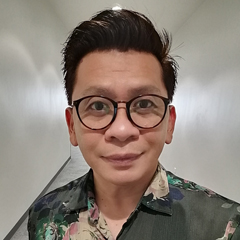
Gerry G. De Leon
Secretary, CIPR
Gerry joined CIPR in 2016 as the Administrative Assistant to the CIPR Director. He possesses a Bachelor of Science Degree in Computer Data, Process Management.
Educational Qualification
- B.S., Computer Data Processing Management, Polytechnic University of the Philippines, 1991



